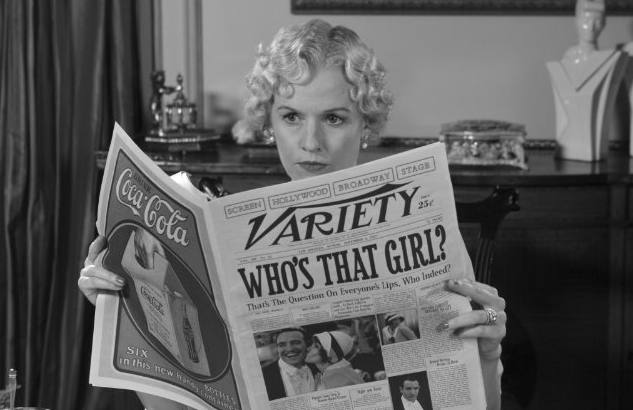We always welcome a review to share with readers, if you have seen a film, read a book or been to a music gig recently and would like to share your review, get in touch. Guest reviews do not necessarily reflect the opinion of the publication. Ed
At first glance, Singin’ in the Rain and The Artist don’t have much in common. One is a full-on Hollywood technicolour song and dance romance movie and the other is a French-originated black and white silent film with no stars, no dialogue apart from speech cards and directed by a French/Lithuanian director called Michel Hazanavicius.
Yet both are now cult movies, and both deal in their own ways with the idea of cinema and the change that technology brings.
As bold as brass
Singin’ in the Rain is bold as brass, with Gene Kelly at the top of his form, playing a silent-era heart-throb at the moment when the Talkies arrive. He has a screen partnership with a leading lady and a best friend played by Donald O’Connor. He meets a young aspiring actress played by Debbie Reynolds. You could write the script from here on, but I don’t think I would be spoiling the plot if I reveal that Kelly’s screen partner is completely unsuitable for talking roles.
The Artist exists in much the same territory. Jean Dujardin plays George Valentin who is also a screen heart-throb, a supremely self-satisfied leading actor who is adored by all and used to getting his own way. He too meets and falls for a young actress, played by Bérénice Béjo. His difficulty arises from his refusal to take talking pictures seriously. Both actors are French, but in a silent film, who cares?
A mystery and a delight
Singin’ plays for laughs, making fun with the difficulties working with somewhat primitive sound equipment and the difficulties that actors and directors had with adapting their skills to the new technology. There was no question that everyone in the industry had to adapt or fall by the wayside. The colour is glorious, the singing and dancing sublime, and it all takes place in a perfectly-realised Hollywood dream world, with the early 50s pretending to be the end of the 1920s, only rarely straying into black and white when showing segments of the films they were supposed to be making.
The Artist has a completely different approach. There is no dialogue or colour at all. It’s presented in an old-fashioned square screen ratio, and made to look as much like the films of the period as possible. How the story is presented so effectively with these constraints is a mystery and a delight, and fantastically clever and inventive and entertaining. It takes seriously the consequences of ignoring the future and having too much pride.
A love story to Cinema itself
Singin’ is a celebration of cinema, with the most sublime songs and dance routines, an affectionate look back to the glorious but limited past and with a section boldly looking forward to the future.
The Artist is a love story to Cinema itself, with innumerable references to film-making and famous films themselves. I stopped counting the moments that honoured previous films, from Public Enemy to Citizen Kane, a Star Is Born, Busby Berkeley, and so many others, and there were great sight gags and turns from actors like John Goodman and James Cromwell, not to mention a small dog which stole every scene with impeccable action and timing. It pulls off every trick and artifice with a freshness and a sense of fun that are both respectful and tongue-in-cheek.
Beaming with pleasure
I have to mention the music too. The songs and orchestration in Singin’ was beautiful, and while The Artist has neither dialogue nor sound effects throughout, there’s wonderful music practically all through, written by Ludovic Bourse, which accompanies and complements each scene and emotion beautifully.
Both of these films made me beam with pleasure, and left a smile on my face for days afterwards. I’m sure I’ll watch them both again and again.





